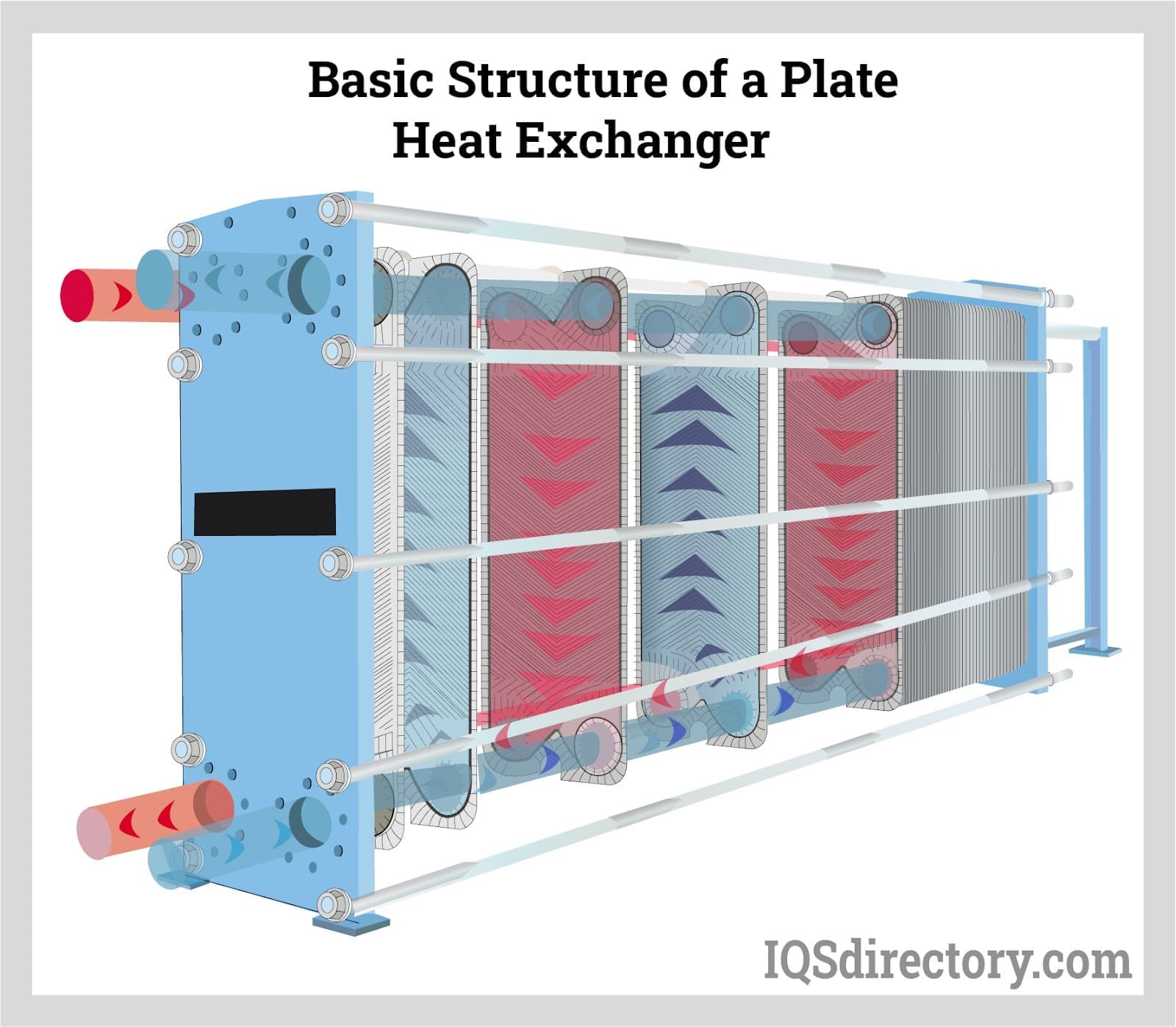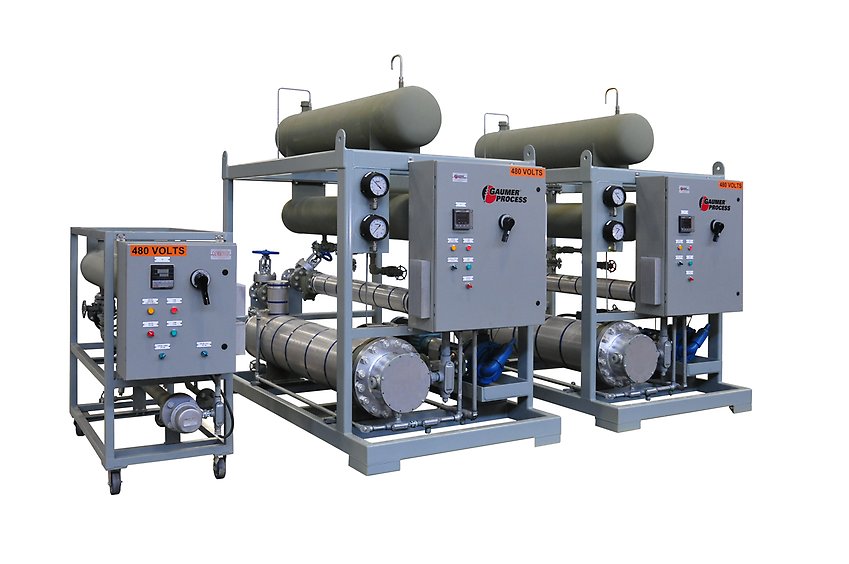Exploring the Potential of DVS Heat Transfer Systems in Modern Thermal Management
The Role of Heat Transfer Systems in Sustainable Power Solutions for the Future
Heat transfer systems are vital in the quest for lasting power services. They optimize thermal power management, enhancing the effectiveness of sustainable modern technologies. By employing systems like conduction, radiation, and convection, these systems reduce power losses. Their function in solar thermal and geothermal applications is particularly considerable. As advancements emerge, the potential for more developments elevates crucial questions concerning future energy methods. What growths will form the landscape of lasting energy?
Understanding Heat Transfer Solutions

The Value of Thermal Power Administration
Effective thermal energy administration is essential for taking full advantage of energy effectiveness and lessening waste in various systems. By managing temperature level and enhancing Heat transfer processes, organizations can significantly lower power consumption and functional expenses. Effective monitoring entails the execution of sophisticated technologies and practices that monitor and regulate thermal conditions within systems, guaranteeing that power sources are utilized effectively. In enhancement, proper thermal energy management adds to lowering greenhouse gas emissions, lining up with international sustainability objectives. It also improves system reliability and efficiency, resulting in enhanced product high quality and longer equipment lifespan. Inevitably, focusing on thermal power administration is an essential action in the direction of developing a lot more sustainable power options and fostering an accountable technique to energy consumption in residential and industrial contexts.
Applications of Heat Transfer in Renewable Power
While different sustainable power resources promise sustainability, the effective application of Heat transfer plays a vital function in their performance. In wind energy systems, Heat transfer is made use of for turbine component cooling, enhancing performance and long life. Geothermal energy depends on effective Heat exchange in between the planet's subsurface and the liquid flowing in the system, optimizing energy removal. Biomass energy procedures additionally gain from Heat transfer, as it helps in transforming organic products into useful gas via pyrolysis and gasification. In addition, in hydropower, keeping suitable temperature levels in reservoirs can boost energy outcome. Each of these applications shows the important importance of Heat transfer systems in boosting eco-friendly power technologies, inevitably contributing to a much more sustainable power future.
Enhancing Solar Thermal Power Efficiency
As solar thermal power systems proceed to evolve, boosting their effectiveness has actually come to be essential for maximizing energy result. Advancements in Heat transfer technologies, such as boosted thermal storage materials and innovative Heat exchangers, play a considerable function in enhancing performance. By using advanced products that have remarkable thermal conductivity, systems can catch and move Heat better. Additionally, integrating radar that comply with the sunlight's path guarantees that collectors receive ideal solar exposure throughout the day. Making use of nanotechnology in solar absorbers can even more boost power absorption prices. Moreover, integrating automated control systems helps control temperature levels and take care of power distribution effectively, causing reduced losses and enhanced overall system efficiency. These improvements lead the way for even more sustainable solar thermal power remedies in the future.
Geothermal Heating: A Lasting Option
Geothermal home heating presents a sensible alternative for sustainable energy, supplying substantial environmental advantages via lowered greenhouse gas discharges. Its efficiency and cost-effectiveness make it an attractive alternative to traditional heating unit. However, challenges associated with execution has to be dealt with to optimize its potential effect.
Environmental Benefits of Geothermal
Conventional heating approaches contribute significantly to greenhouse gas discharges, geothermal heating offers an engaging alternative that lessens environmental effect. By taking advantage of the Earth's interior Heat, geothermal systems make use of a renewable resource source, noticeably decreasing reliance on fossil gas. This method produces very little carbon discharges, making it a cleaner choice for household and industrial heating. In addition, geothermal systems advertise energy efficiency, as they need less energy contrasted to standard heating unit. DVS Heat Transfer Systems. The use of geothermal energy additionally assists in reducing air pollution, boosting local air high quality and public health and wellness. As a sustainable service, geothermal home heating sustains climate change reduction initiatives, positioning itself as a necessary part in the change in the direction of a greener future
Effectiveness and Cost-Effectiveness
Just how does geothermal home heating determine up in regards to efficiency and cost-effectiveness contrasted to conventional heater? Geothermal home heating shows exceptional efficiency, commonly achieving a coefficient of efficiency (POLICE) of 3 to 5, implying it produces three to five systems of Heat for every system of electricity eaten. This efficiency converts right into reduced operating expense, specifically in regions with secure geothermal sources. Initial installment expenses can be more than standard systems; nevertheless, lasting financial savings on energy bills and decreased upkeep costs can offset these ahead of time financial investments. Additionally, numerous federal governments incentivize geothermal systems via refunds and tax obligation credit ratings, boosting their cost-effectiveness. Generally, geothermal heating emerges as a economically viable and lasting alternative to even more standard heating remedies.
Application Difficulties and Solutions
Various difficulties can hinder the prevalent execution of geothermal home heating systems, in spite of their clear benefits as a lasting energy remedy. High initial installment expenses typically discourage financiers and property owners, making financing a significant obstacle. In addition, the geographical restrictions of appropriate geothermal websites limit availability in certain regions. Local guidelines and allowing processes can also complicate project growth, causing delays. Furthermore, public recognition and understanding of geothermal systems remain low, hindering approval. To resolve these obstacles, targeted education and learning campaigns can boost public understanding, while government motivations might reduce monetary problems. Collaborating with regional authorities to streamline policies may facilitate smoother task approvals, ultimately promoting the adoption of geothermal heating as a viable, sustainable power alternative.
Developments in Heat Transfer Technologies
Developments in Heat transfer modern technologies play a vital duty in enhancing energy efficiency and sustainability. Advanced Heat exchangers and stage modification materials are at the leading edge of these advancements, supplying significant enhancements in thermal monitoring. These technologies not just optimize energy usage however likewise add to lowering environmental effect in various applications.
Advanced Heat Exchangers
Advanced Heat exchangers play a vital duty in improving power efficiency across numerous applications in lasting energy options. These tools promote the transfer of Heat in between 2 or even more fluids, noticeably reducing power consumption in processes such as commercial heating, air conditioning, and power generation. Developments in products and layout, such as using nanofluids and small arrangements, have resulted in boosted thermal performance and lowered dimension needs. Additionally, improvements in electronic surveillance and control systems permit optimized operation, more raising effectiveness. By decreasing waste Heat and taking full advantage of energy healing, progressed Heat exchangers contribute to lower carbon footprints and sustain the shift toward eco pleasant innovations. Their continued advancement is important for accomplishing international energy sustainability objectives.
Phase Change Materials
The integration of phase modification materials (PCMs) right into Heat transfer modern technologies stands for a considerable improvement in power administration and effectiveness. PCMs absorb and release thermal energy throughout their stage adjustments, allowing efficient temperature law in structure products and energy systems. By storing excess Heat throughout top find out here periods and releasing it when need increases, PCMs add to load shifting and energy preservation - DVS Heat Transfer Systems. This capability enhances the performance of renewable resource systems, especially in solar thermal applications. Additionally, PCMs can enhance the thermal convenience of interior atmospheres, minimizing dependence on standard heating and cooling methods. As technologies in PCM formulations remain to emerge, their duty in sustainable power options is positioned to expand, supplying promising methods for future research study and application

Future Potential Customers for Heat Transfer in Lasting Power
As the need for sustainable energy services remains to increase, the duty of Heat transfer systems is becoming progressively important in shaping future technologies. Innovations in designs and products are anticipated to improve efficiency in Heat transfer, lowering power losses in numerous applications. The integration of advanced thermal storage systems, such as stage adjustment products and thermochemical storage space, will certainly enable far better administration of energy resources. Research into nanofluids and biomimetic Heat exchangers might further enhance i was reading this thermal performance. The adoption of clever innovations will certainly permit for real-time surveillance and flexible control of Heat transfer processes. These improvements are poised to considerably add to the overall efficiency and sustainability of power systems, leading the way for a more energy-efficient future.
Often Asked Questions
Just How Can Individuals Implement Heat Transfer Equipment in your home?

Individuals can carry out Heat transfer systems in the house by installing energy-efficient devices, utilizing radiant heat, and enhancing insulation. These steps enhance power effectiveness, decrease prices, and advertise sustainable techniques in domestic environments.

What Are the Prices Related To Mounting Heat Transfer Equipments?
The prices connected with mounting Heat transfer systems vary commonly, typically including devices, setup labor, and upkeep. Aspects such as system kind, home dimension, and neighborhood laws greatly affect the overall expense entailed.
Exist Government Incentives for Heat Transfer System Installations?
Federal government motivations for Heat transfer system setups vary by region and can consist of tax obligation refunds, grants, and credits. These financial use this link advantages aim to encourage fostering, ultimately advertising power efficiency and reducing ecological effect within communities.
Just How Do Heat Transfer Equipments Effect Energy Expenses?
Heat transfer systems notably influence power costs by optimizing energy performance. By improving the transfer of Heat, these systems minimize power consumption, resulting in reduced utility expenses and developing a more lasting approach to power management.
What Upkeep Is Required for Heat Transfer Solutions?
Upkeep for Heat transfer systems consists of regular inspections, cleaning of elements, examining fluid degrees, making certain proper insulation, and changing worn components. These jobs help preserve performance, prevent malfunctions, and lengthen the system's functional life-span.
These systems promote the activity of thermal energy from one medium to one more, allowing the transfer of Heat for home heating, energy, or air conditioning generation purposes. Geothermal energy relies on effective Heat exchange between the earth's subsurface and the fluid circulating in the system, maximizing energy extraction. Furthermore, geothermal systems advertise energy effectiveness, as they need much less energy compared to standard home heating systems. Advanced Heat exchangers play a necessary function in improving power effectiveness throughout numerous applications in lasting power remedies. Heat transfer systems notably influence power bills by optimizing energy efficiency.